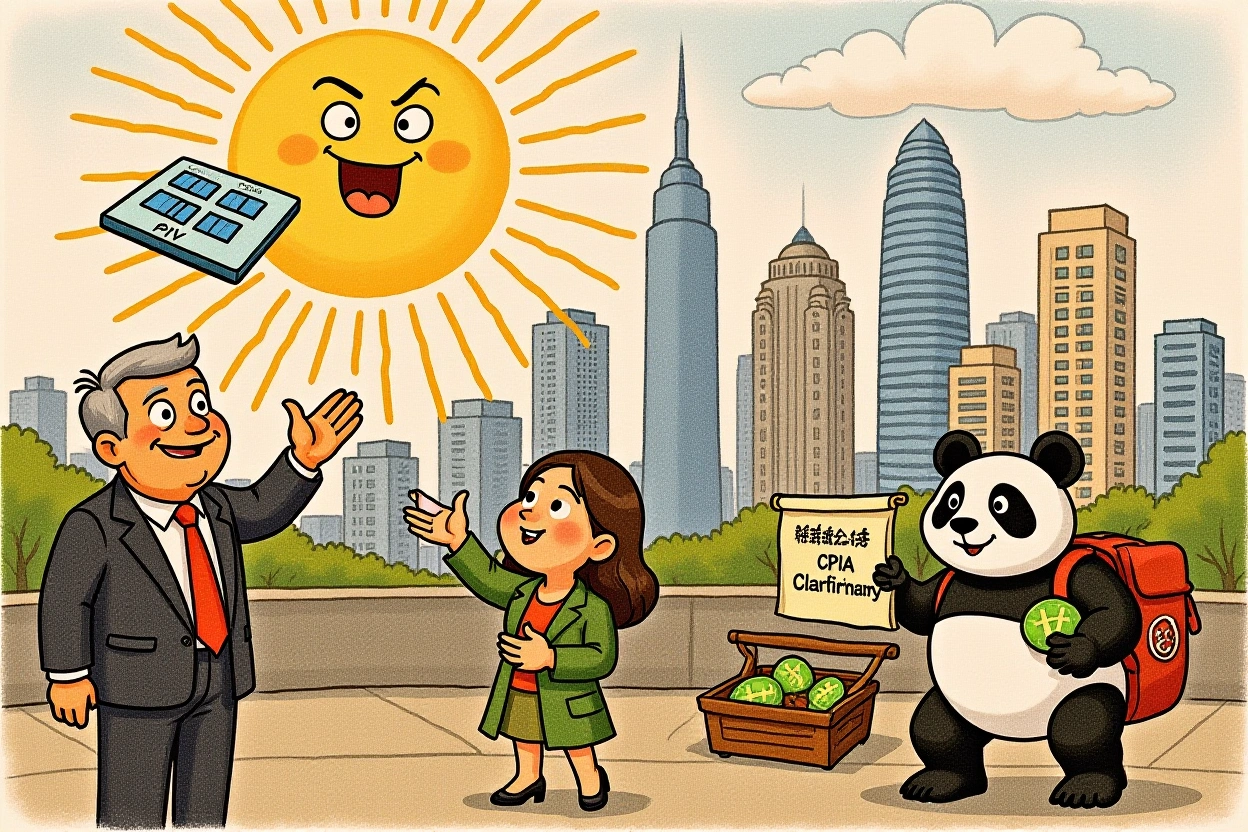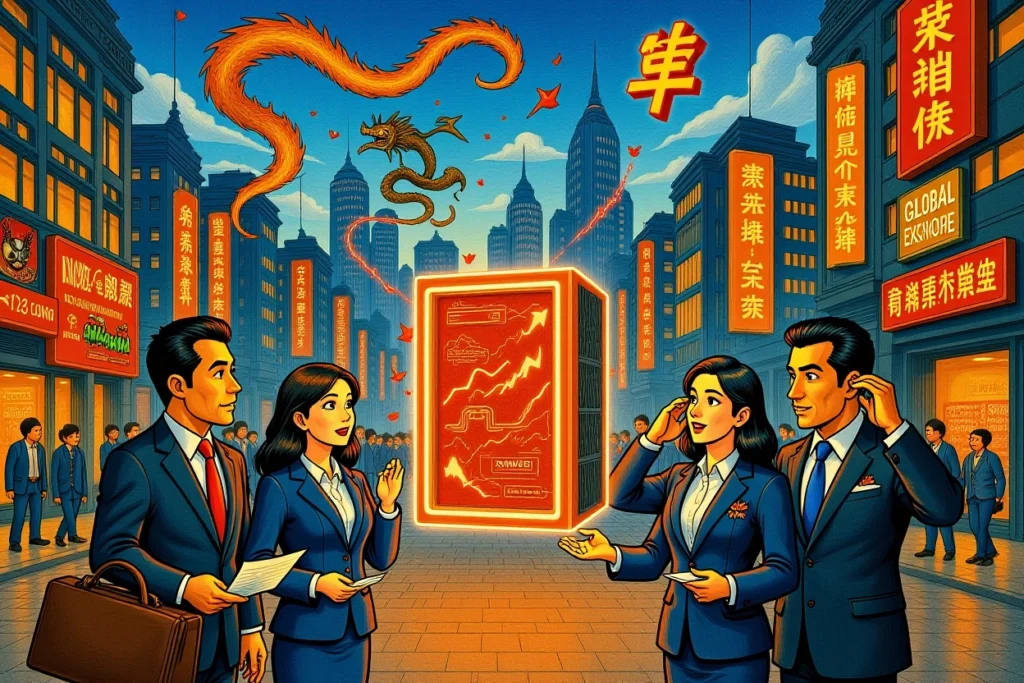Summary: Key Points Covered
- China Photovoltaic Industry Association publicly denies viral rumors about imminent polysilicon capacity consolidation
- Market volatility triggered by unverified speculation saw polysilicon futures surge over 4%
- Leading solar stocks including GCL Tech and Tongwei showed sharp rebounds post-clarification
- Regulatory alignment emerging between industry standards and government policy enforcement
- Market analysts warn against speculative trading based on unconfirmed production adjustments
Surging Market Speculation Meets Official Pushback
On July 29th, the China Photovoltaic Industry Association (CPIA) issued an unusual public clarification amid swirling market rumors about imminent restructuring in the polysilicon sector. One week after hosting a crucial industry coordination meeting, the CPIA utilized its official WeChat channel to counter claims circulating across social media platforms regarding forced “anti-involution” measures targeting polysilicon producers. Their unequivocal statement warned stakeholders: “Related content severely contradicts actual situations – we urge everyone not to believe or spread rumors.”
The clarification holds particular significance as investment decisions increasingly pivot on Chinese solar policy developments. With China controlling over 80% of global polysilicon production according to Wood Mackenzie research, consolidation rumors immediately sent shockwaves through commodity markets. Industry observers now await substantive reforms addressing chronic overcapacity that has depressed polysilicon prices nearly 70% since January 2023.
Anatomy of a Market-Moving Contradiction
The Rumors Versus Official Position
Unverified claims distributed through private investor groups and self-media channels suggested imminent administration-led production consolidation. This alleged coordinated polysilicon output reduction would have effectively constituted unprecedented market intervention. The CPIA’s unusually sharp rebuttal specifically denied “anti-involution work” targeting polysilicon manufacturers, positioning its approach within established legal frameworks.
“We’ll advance anti-involution efforts following market-oriented principles,” the statement clarified, implicitly rejecting administrative coercion. The CPIA instead advocates standards-based reform, explicitly referencing proposed revisions to polysilicon energy consumption benchmarks presented at their July 24 industry conference.
Market Consequences in Real Time
Trading patterns vividly demonstrated rumor impacts before the official clarification surfaced. Polysilicon futures traded on the Guangzhou Futures Exchange spiked over 4% during the rumor-fueled session as traders priced in potential supply constraints. Equity markets followed suit with photovoltaic equities rebounding from morning lows:
- Solar module specialty materials provider Foster (福斯特) surged 10% limit-up
- Leading converters manufacturer Hope Electric (禾望电器) gained 9.97%
- Polysilicon producers including GCL TECH (协鑫科技) climbed 7.69% while Daqo New Energy (大全能源) advanced 5.17%
Regulatory Alignment Signals Coordinated Reform
Government Policy Parallels
Days before the CPIA clarification, Chinas Ministry of Industry and Information Technology (MIIT) hosted national industry regulators declaring intent to “strengthen governance in key sectors like photovoltaics.” Crucially, their official statement pledged using “standard upgrades to force backward capacity exits” matching verbatim the CPIA’s July 24 recommendations.
Legal Pathway Forward
These synchronized communications suggest coordination between industry and government initiatives. Rather than abrupt administrative intervention though, the CPIA emphasizes sequential reforms:
- Implement revised polysilicon energy consumption benchmarks
- Establish evaluation metrics for technological advancement
- Provide transition periods for non-compliant facilities
Sector Analysis: Navigating Turbulent Markets
Trading Psychology Assessment
Hongye Futures analysts concluded: “As the core commodity in this current anti-involution initiative, polysilicon attracts outsized market rumor sensitivity. The MIIT statement confirms industry restructuring intentions providing firm price support.” These market-sensitive policy expectations transformed traders response calculus toward even unverified consolidation claims.
Potential Structural Implications
Galaxy Futures published technical projections indicating successful polysilicon market consolidation could fundamentally reverse long-dominant oversupply narratives. “Positive resolution signals would rapidly translate into bullish futures positioning,” they cautioned investors. Market participants now closely watch for actual production discipline signals beyond policy declarations.
Global Industry Contextualization
Beyond national market movements, the polysilicon rumor controversy emerges against fracturing global solar trade relationships. European and Indian manufacturers increasingly challenge China’s solar supply chain dominance amid rising trade barriers. This consolidation speculation coincidentally surfaced days before anticipated EU anti-subsidy decisions impacting China’s PV exports. Market turbulence demonstrates profound international interdependence across solar production ecosystems.
Responsible Industry Participation Guidelines
The CPIA’s concise response handlers recommendations merit investor consideration: prioritize official association communications over anonymous rumor channels. Their market stabilization mandate appears focused on systemic solutions rather than temporary fixes. Ongoing industry reforms demand balanced approaches where technologically lagging capacity gradually exits without destabilizing supply chains.
Enhanced transparency and investor education remain foundational to photovoltaic market maturation. Participating responsibly presently requires scrutinizing extraordinary claims about polysilicon market consolidation until policy implementation details materialize.




